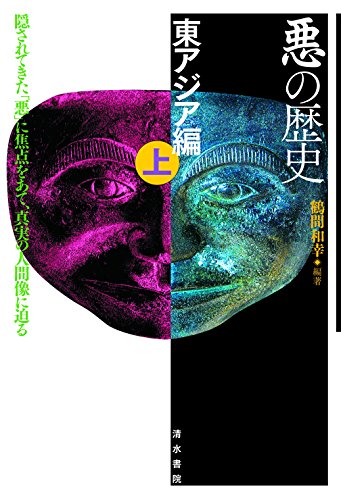4 0 0 0 OA 多衛星データを用いた秦帝国の空間的考察
- 著者
- 惠多谷 雅弘 鶴間 和幸 中野 良志 村松 弘一 小林 次雄 吉田 愛 福島 惠
- 雑誌
- 学習院大学国際研究教育機構研究年報 (ISSN:21890838)
- 巻号頁・発行日
- no.3, pp.89-112, 2017-02-01
高分解能衛星データで秦始皇帝陵墳頂を通る南北中軸線の方位を計測すると,北方向は現在の真北からやや東偏している。この南北中軸線を方位図法投影した地球の三次元球体衛星画像上にプロットしたところ,その北方向は驪山北方約700 km に位置する陰山山脈烏拉山の最高峰近くに達した。またこの時,『史記』の記述で統一秦の東門がおかれた場所とされる胊県(現在の連雲港市)を通る東西線は,『三輔旧事』で秦西門との記述がある約1,100 km 西方の汧水(千河)を横切り隴山に達することも分かった。『史記』や『三輔旧事』の記述は統一前後の秦に当時の方位を意識した空間的概念が存在したことを示唆しているが,衛星画像の解析結果は秦帝国形成において胊県(東海),隴山(汧水),驪山(渭水),烏拉山(黄河)の山水を東西南北のランドマークとした壮大なグランドプランが存在した可能性を示唆している。
3 0 0 0 OA 第1章 木村武山中国美術コレクションの由来(木村武山と中国美術コレクション)
- 著者
- 鶴間 和幸 Kazuyuki Tsuruma
- 出版者
- 学習院大学東洋文化研究所
- 雑誌
- 調査研究報告 = Occasional papers (ISSN:09196536)
- 巻号頁・発行日
- no.70, pp.1-34, 2021-03
学習院大学東洋文化研究所一般研究プロジェクト「木村武山と中国美術コレクション」(研究代表者 鶴間和幸(文学部教授)、2017 ~ 2018年度)の研究成果
1 0 0 0 IR 講演 中国古代美術の海外流出 (中野隆生先生退任記念号)
- 著者
- 鶴間 和幸
- 出版者
- 学習院大学史学会
- 雑誌
- 学習院史学 = Gakushuin shigaku : Gakushuin historical review (ISSN:02861658)
- 巻号頁・発行日
- no.58, pp.69-83, 2020-03
1 0 0 0 OA 人文系学士課程教育における卒業論文がもたらす学習成果の検証
1 0 0 0 IR 司馬遷の時代と始皇帝--秦始皇本紀編纂の歴史的背景
- 著者
- 鶴間 和幸
- 出版者
- 東洋文庫
- 雑誌
- 東洋学報 (ISSN:03869067)
- 巻号頁・発行日
- vol.77, no.1, pp.p1-31, 1995-10
Simaqian the historian compiled the Xia (夏) Yin (殷) Zhou (周) Qin (秦) and Qinshihuang Benji as pre-history of the Han (漢) in order to write the Wudi (武帝) Benji as a modern history. Both Wudi and Qinshihuang's behavior patterns were similar according to Simaqian's account. As Qinshihuang's image in Qinshihuang Benji is unacceptable as the real image, the purpose of this paper is to clarify the real image of Qinshihuang by analyzing the historical background of the writing. Descriptions of Qinshihuang Benji are classified into a chronological section, the traditional section of the Warring States and a section on the legend that Simaqian himself collected from various places. There is no difference in the quantity among chronological descriptions, but Simaqian put legends, inscriptions, imperial edicts and memorials to the Throne in the section of a chronicle with emphasis. We must recognize that Qinshihuang Benji is a Qin history written from a stand-point of Simaqian, seeing how an increased description was inserted. When Simaqian was twenty years old, he visited historic sites and recorded legends of Qinshihuang. Though this trip was not intended to visit the historic sites of Qinshihuang, the route was similar to Qinshihuang's inspection tour. Simaqian attended Wudi as a government official from the second tour of the total seven tours and during these tours he saw more of Qinshihuang's ruins. Other than these experiences, he referred to a discussion on the history for destinies of Qin dynasty advocated by the bureaucrats in the beginning of the former Han, such as Jiayi (賈誼). But he had initiated an original viewpoint that the era of unified empire is distinguished from the era of Warring State Qin, for he had lived in the era of Wudi. Simaqian had drawn a conclusion to the history of the Qin Empire, dividing it into Qin Benji and Qinshihuang Benji.
1 0 0 0 IR 漢代における秦王朝史観の変遷--賈誼「過秦論」,司馬遷「秦始皇本紀」を中心として
- 著者
- 鶴間 和幸
- 出版者
- 茨城大学教養部
- 雑誌
- 茨城大学教養部紀要 (ISSN:02884224)
- 巻号頁・発行日
- no.29, pp.p1-19, 1995-09
1 0 0 0 木村正雄著『中国古代農民叛乱の研究』
- 著者
- 鶴間 和幸
- 出版者
- 公益財団法人史学会
- 雑誌
- 史學雜誌 (ISSN:00182478)
- 巻号頁・発行日
- vol.89, no.2, pp.230-237, 1980-02-20
1 0 0 0 衛星データを用いた秦始皇帝陵の陵園空間に関する一考察
- 著者
- 惠多谷 雅弘 鶴間 和幸 中野 良志
- 出版者
- 日本中国考古学会
- 雑誌
- 中国考古学 = Chinese archaeology (ISSN:13490249)
- 巻号頁・発行日
- no.14, pp.127-140, 2014-12
